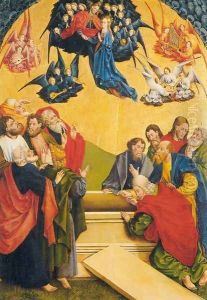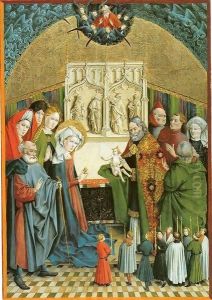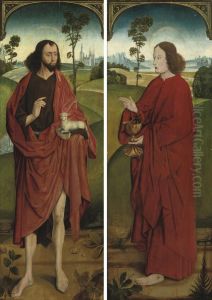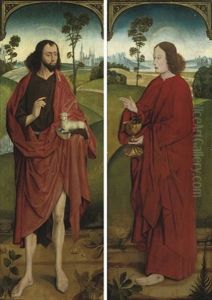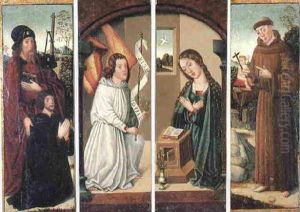Johann Koerbecke Paintings
Johann Koerbecke was a German painter known for his contributions to late Gothic art in Westphalia, an area in northwestern Germany. Born around 1420 in Münster, Westphalia, not much is known about his early life, but it is believed that he was active in Münster and possibly received his artistic training there. Koerbecke is considered one of the most significant Westphalian artists of his time, and his works are notable for their vibrant colors, attention to detail, and the emotional expressiveness of the figures he depicted.
Koerbecke's most famous work is the high altar of the church of St. Lambert in Münster, which he completed in 1457. This elaborate piece is a prime example of the narrative and devotional functions of altarpieces during the late Middle Ages. The St. Lambert altarpiece contains numerous panels illustrating scenes from the life of Christ and the Virgin Mary, executed with a clarity and storytelling ability that give insight into the religious life and the artistic sensibilities of the time.
Throughout his career, Koerbecke painted several other altarpieces and religious works, often characterized by their intricate detail and the use of gold leaf, which was a common element in Gothic art. His style reflects the transition from the Middle Ages to the Renaissance, as he combined Gothic linearity and stylization with a growing interest in perspective and the naturalistic representation of figures and space.
Johann Koerbecke's exact date of death is recorded as 1491. Although not as well-known today as some of his contemporaries, his work remains an important part of the study of late Gothic art in Germany. His surviving paintings can primarily be found in Westphalia, particularly in Münster, where they continue to be studied for their artistic merit and historical significance. Koerbecke's legacy is that of a regional master who contributed to the richness of late medieval German painting and whose works provide valuable insights into the visual culture of his time.
